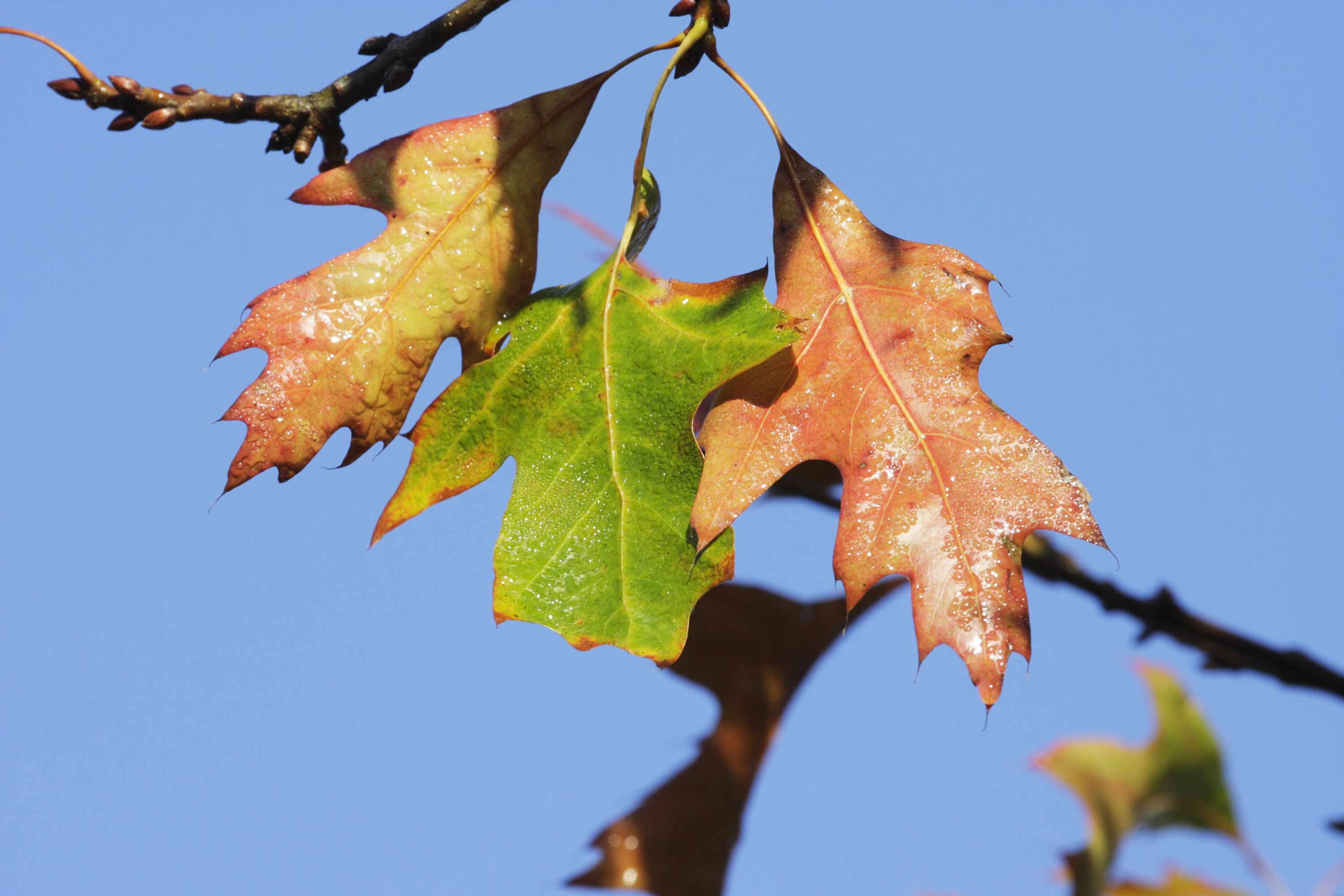Pin oak
(Quercus coccinea)

Description
Quercus palustris, the pin oak or swamp Spanish oak, is a tree in the red oak section (Quercus sect. Lobatae) of the genus Quercus. Pin oak is one of the most commonly used landscaping oaks in its native range due to its ease of transplant, relatively fast growth, and pollution tolerance. Pin oak is a medium-sized deciduous tree growing to 18–22 m (59–72 ft) tall, with a trunk up to 1 m (3.3 ft) diameter. It has an 8–14 m (26–46 ft) spread. A 10-year-old tree grown in full sun will be about 8 m (26 ft) tall. Young trees have a straight, columnar trunk with smooth bark and a pyramidal canopy. By the time the tree is 40 years old, it develops more rough bark with a loose, spreading canopy. This canopy is considered one of the most distinctive features of the pin oak: the upper branches point upwards, the middle branches are at right angles to the trunk, and the lower branches droop downwards. The leaves are 5–16 cm (2–6+1⁄4 in) long and 5–12 cm (2–4+3⁄4 in) broad, lobed, with five or seven lobes. Each lobe has five to seven bristle-tipped teeth. The sinuses are typically u-shaped and extremely deep cut. In fact, roughly the same amount of sinus area exists as actual leaf area. The leaf is mostly hairless, except for a very characteristic tuft of pale orange-brown down on the lower surface where each lobe vein joins the central vein. Overall autumn leaf coloration is generally bronze, though individual leaves may be red for a time, and is not considered particularly distinctive. The acorns, borne in a shallow, thin cap, are hemispherical, 10–16 mm (13⁄32–5⁄8 in) long and 9–15 mm (11⁄32–19⁄32 in) broad, green maturing pale brown about 18 months after pollination. Unless processed using traditional methods, the acorn is unpalatable because the kernel is very bitter. In its natural environment pin oak is a relatively short-lived, fast-growing pioneer or riparian species with a lifespan of approximately 120 years against many oaks which can live several centuries. Despite this there are many examples of pin oak that exceed this lifespan. It is naturally a wetland tree, and develops a shallow, fibrous root system, unlike many oaks, which have a strong, deep taproot when young. It is confined to acidic soils, and does not tolerate limestone or sandy Florida soil, and grows at low altitudes from sea level up to 350 m (1,148 ft). The Latin specific epithet palustris means "of swamps".
Taxonomic tree:







